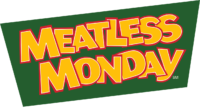Your Guide to Cooking with Whole Grains
Want to bolster your diet with hearty plant-based ingredients? Look no further than whole grains. Unlike refined grains (white rice, white flour), which have their outer layers stripped away, whole grains are a complete nutritional package.
Whole grains contain three parts: the brand, germ, and endosperm, each of which are loaded with important vitamins, minerals, and phytochemicals. Refined grains are whole grains that have had many of these nutrients removed – for example, white rice vs. brown rice. Studies show that whole grains, compared to refined grains contain a package of nutrients that provide a protective effect and may lower your risk of developing heart disease, stroke, colorectal cancer and type 2 diabetes.
But what sort of whole grains should you be stocking in your pantry? And what can you make with them? Let’s start by saying, when it comes to whole grains, there’s a lot of options, ranging from the familiar — whole wheat, brown rice, oats, popcorn, to the more uncommon, like millet, bulgur, farro, and quinoa. Although the cooking methods for each of these whole grains might differ slightly, many of them can be used interchangeably. This Monday, start experimenting with whole grains for some added heft to your meatless meals.
Whole Grain Cooking Tips
- Generally, you can pre-soak most grains in the allotted amount of water a few hours before cooking to speed up the process. Best for harder grains with a longer cooking time.
- Some grains, like brown rice, farro, and wheat berries, can be cooked using the “pasta method,” where uncooked whole grains are placed in a large pot of boiling water, boiled until tender, then drained of their excess liquid. This method makes it easier to prepare grains to your texture preference without measuring the exact amount of water needed in advance.
- Grains sticking to the bottom? Don’t fret. Turn off the heat, add a small quantity of liquid, replace the lid, and let it sit for a few minutes. Afterwards the grains should scrape off the bottom with ease.
- Use an instant cooker or rice cooker to easily prepare grains.
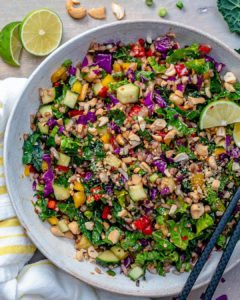 Brown Rice
Brown Rice
One cup of uncooked brown rice requires 2 ½ cups water and around 40-45 minutes of cooking time (depending on the variety). This yields about 3 cups of cooked brown rice. You can use brown rice to make a meatless jambalaya, easy umami-rich fried rice, a vibrant Thai rice salad, or a coconut-infused red beans and brown rice.
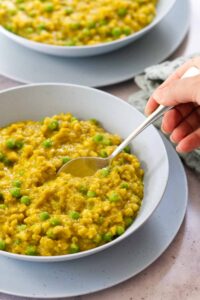 Barley
Barley
One cup of uncooked barley requires 3 cups of water and 45-60 minutes of cooking time. Avoid pearled barley, which is refined. This yields 3 ½ cups of cooked barley. The hearty grain can add some bulk to plant-based meals, like in these barley-stuff peppers (use plant-based egg/cheese to make vegan) or this recipe for curried barley porridge.
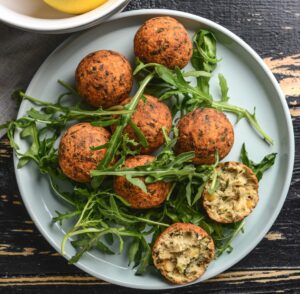 Bulgur
Bulgur
One cup of uncooked bulgur requires 2 cups of water and 10-12 minutes of cooking time. This yields 3 cups of cooked bulgur. Typically made from cracked durum wheat, bulgur is a lighter grain that is great in both cold and hot dishes. Try it in these fritter-like adzuki bean bulger balls, bulgur-black bean veggie burger, or Asian-inspired tabouli salad.
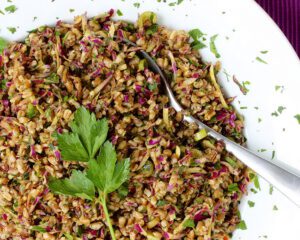 Farro
Farro
Place 1 cup of uncooked farro into a pot of boiling water (the water to farro ratio doesn’t matter). After farro is added, bring water back to a boil, then lower the heat so it maintains a fast simmer, then cook uncovered for 20-40 minutes or until farro is soft to the taste. Drain through a colander or fine mesh strainer. This yields around 2 cups of cooked farro. Use the hearty grain in dishes like farro with pistachios and herbs, farro and white bean veggie burgers, or a refreshing farro and cabbage salad.
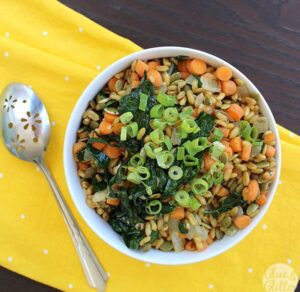 Kamut
Kamut
One cup of Kamut requires 4 cups of water and 45-60 minutes of cooking time. To speed up the process, soak Kamut in water overnight. This yields 4 cups of cooked Kamut. This isn’t the most popular grain, but it’s worth adding to your pantry. The grain is twice the size of traditional wheat, and has a pleasant, nutty flavor. Try it in this Kamut, lentil, chickpea soup or this easy Kamut pilaf.
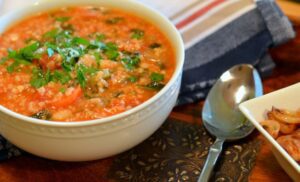 Millet
Millet
One cup of uncooked millet (hulled) requires 2 ½ cups of water and 20 minutes of cooking time. This yields 4 cups of cooked millet. Originally cultivated in Africa and northern China, millet is a dietary staple for a large portion of the world’s population. It’s naturally gluten-free, with a subtle corn flavor. You can add it to soups and stews, like this hearty white bean and millet soup, or you can use it to make a crispy patty or cake, like these Manhattan millet cakes. You can even combine millet and cauliflower to make a healthier version of “mashed potatoes.”
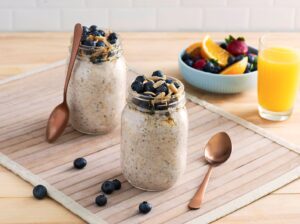 Oats (Steel Cut)
Oats (Steel Cut)
One cup of uncooked steel cut oats requires 4 cups of water and 20 minutes of cooking time. This yields 4 cups of cooked oats. You can use oats for a lot more than just oatmeal (although this recipe for overnight oats with coconut milk is a great breakfast). Savory options like this Indian-style oats upma or oatmeal risotto with cherry tomatoes and basil are both innovative uses of oats.
 Popcorn
Popcorn
Surprise! Your favorite movie theater finger-food is actually a terrific whole grain snack, as long as its air-popped or cooked on the stovetop. Try amplifying the flavor of your popcorn by dressing it up with seasonings, spices, healthy fats (like olive oil), or a sprinkling of nutritional yeast.
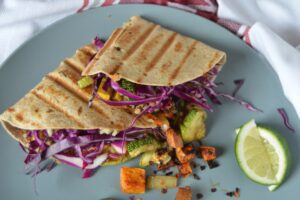 Quinoa
Quinoa
One cup of uncooked quinoa requires 2 cups of water and 12-25 minutes of cooking time, rinse before cooking. This yields 3-4 cups of cooked quinoa. There’s a ton you can do with quinoa: veggie and quinoa quesadilla with lime slaw, vegan quinoa chili, vegetarian quinoa biryani, crispy quinoa veggie burgers, lemon mint quinoa salad…the possibilities are truly endless.
Click here for more Meatless Monday recipes. When posting pictures of recipes to your social media network, tag @MeatlessMonday use #MeatlessMonday to show the plant-based community your creation.
